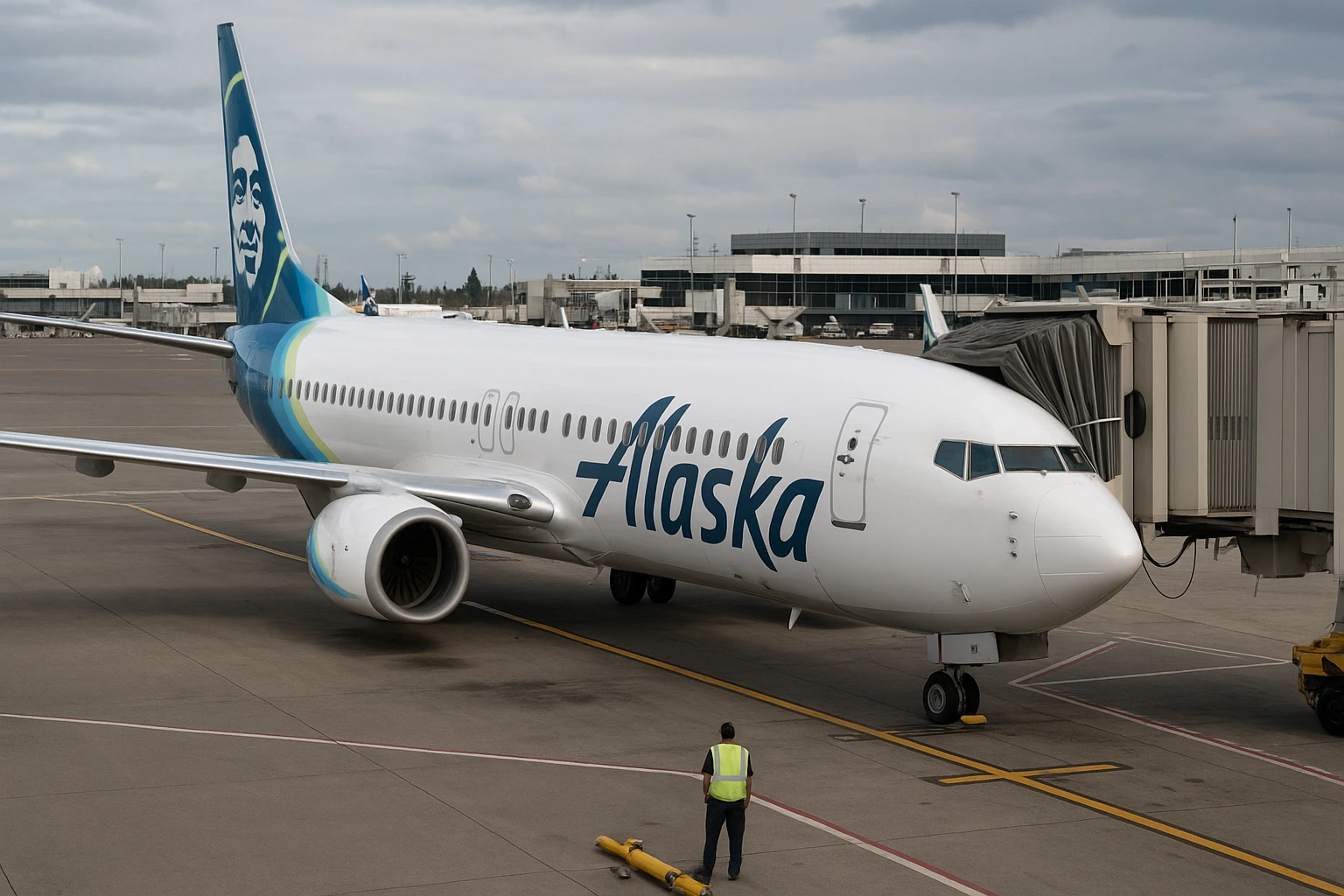SEATTLE (TECHY QUANTUM) — Alaska Airlines restores operations after a widespread IT outage on Thursday grounded all of its flights across the United States, stranding passengers and halting air travel for nearly three hours.
The airline confirmed that the disruption, which also affected its regional subsidiary Horizon Air, was caused by a system malfunction that forced a temporary ground stop at all airports.
The Federal Aviation Administration advisory showed the halt lasted for nearly three hours before the carrier began restoring its systems and flight schedules.
“We are actively restoring our operations following an IT outage,” Alaska Airlines said in a statement posted on social media. “We apologize for the inconvenience and appreciate our guests’ patience as our team works to stabilize the system.”
The Alaska Airlines outage began in the early evening, leading to nationwide flight delays and cancellations. The airline’s mobile app, website, and check in kiosks were also impacted, preventing passengers from checking in or modifying bookings.
By late Thursday, Alaska Airlines restores operations and confirmed most of its systems were back online, allowing flight departures to gradually resume.
This marks the second time in less than a year that Alaska Airlines has experienced an IT-related disruption. In July, a similar outage grounded flights for about three hours, also attributed to internal system errors.
The FAA confirmed that the ground stop request came directly from Alaska Airlines due to “technology issues affecting operational capability.” Once the airline verified system stability, the restriction was lifted.
Aviation experts say that as airlines become more digitally dependent, the risk of system outages disrupting operations has grown significantly.
“Airlines today operate through highly interconnected IT ecosystems,” said aviation technology consultant Mark Reynolds.
“When a critical system fails, even for a short time, the impact can ripple through the entire network from check-ins to flight dispatch.”
Reynolds added that Alaska Airlines’ quick recovery shows progress compared to larger scale failures seen at other US carriers.
“They’ve managed to contain the issue in hours rather than days, which suggests they have strong contingency systems,” he said. Still, industry observers warn that the aviation sector remains vulnerable to software failures.
“Airlines are under pressure to modernize their digital infrastructure,” said Dr. Rebecca Hall, an aviation systems researcher at Embry Riddle Aeronautical University. “Events like this one underscore the urgent need for redundancy and real time backup solutions.”
According to flight tracking service FlightAware, more than 220 Alaska Airlines flights were delayed and at least 30 were canceled nationwide during Thursday’s IT outage.
While Alaska Airlines restores operations faster than many competitors have in similar circumstances, the financial and operational fallout remains significant.
Comparable incidents in the past year include Southwest Airlines’ December 2022 meltdown, which caused over 16,000 flight cancellations and cost the company more than $800 million.
United Airlines also faced a nationwide ground stop in September 2023 after a systems failure disrupted several hundred flights.
In contrast, Alaska Airlines’ latest issue was relatively contained, with most services resuming within hours and limited long term cancellations reported Friday morning.
Travelers across the country shared their frustration and relief as Alaska Airlines restores operations and flights began departing again late Thursday.
At Seattle Tacoma International Airport, passengers described confusion and uncertainty as boarding gates filled with stranded travelers.
“We were supposed to fly to Denver around 6 pm but the flight kept getting delayed,” said David Lang, a business traveler from Portland.
“Staff told us the entire system was down. Once they got it fixed, the updates came quickly they really handled it as best as they could.”
Another passenger, Maria Gonzalez from Los Angeles, said communication helped ease tensions. “They kept updating their social media, which made a big difference,” she said.
“You could tell the staff were under pressure, but they stayed professional.” An Alaska Airlines employee, who requested anonymity, said staff were manually processing tickets during the outage.
“It was all hands on deck,” the employee said. “Once the system came back online, everyone just sighed in relief.” Although Alaska Airlines restores operations successfully, the incident raises broader questions about technology resilience in the airline industry.
“The FAA and Department of Transportation will likely review this incident, especially since Alaska has had two similar outages within a year,” Hall noted. “Regulators are increasingly focusing on whether airlines have sufficient fail safes and backup networks.”
The airline said it would conduct a full internal review to determine the root cause of the failure and implement measures to prevent future disruptions.
“We’re committed to learning from this event,” Alaska Airlines said in a statement. “Our teams are working to ensure this doesn’t happen again.”
Experts expect that as airlines modernize their IT infrastructure, investment in cybersecurity and system redundancy will become even more critical.
“Digital reliability is now as important as aircraft maintenance,” Reynolds said. “Passengers expect smooth operations technology failures just aren’t acceptable anymore.”
As Alaska Airlines restores operations and resumes its flight schedule, the incident serves as a stark reminder of how dependent modern aviation has become on complex digital systems.
Though the outage was brief compared to other high profile airline IT failures, it underscores the fragile balance between innovation and reliability in air travel.
For passengers and the industry alike, Thursday’s event will likely reinforce the need for stronger technological safeguards in the skies.

